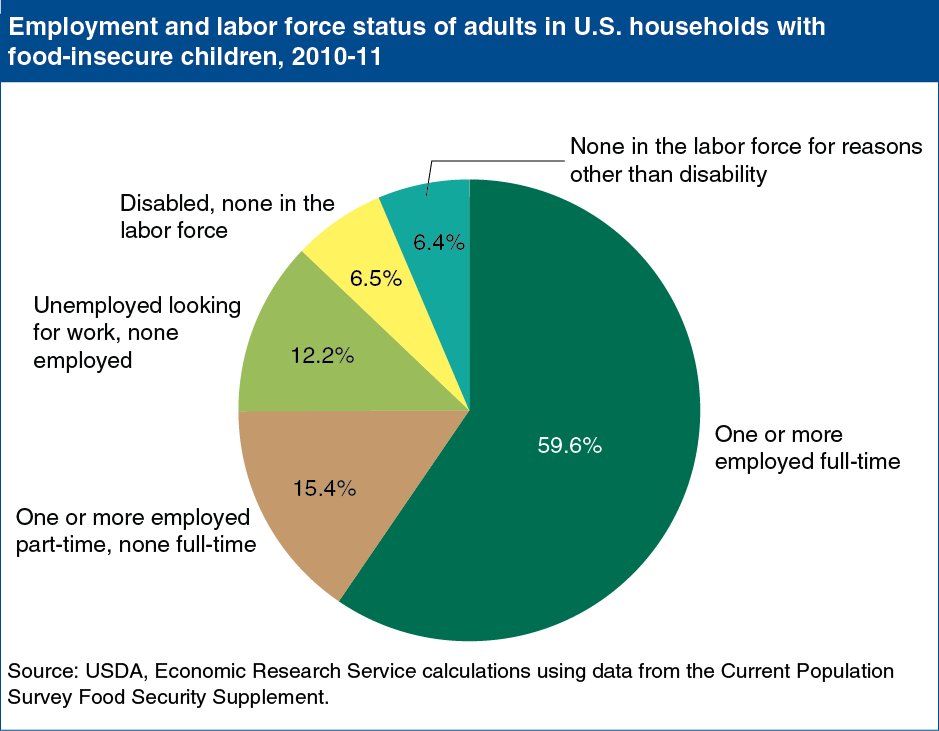Economic downturn changed relationship between employment and children's food security
- by Economic Research Service
- 8/29/2013

Between 2007 and 2011, the percentage of U.S. households with food-insecure children increased from 8.3 to 10.0 percent. Households with food-insecure children are those in which one or more children lack consistent access to adequate food because the household has insufficient money and other resources for food. Among these households, those with unemployed adults and part-time workers comprised a larger portion of the total after the recession than before the recession. In 2006-07, 6.9 percent of households with food-insecure children had an adult who was unemployed and looking for work and no adults employed. By 2010-11, that share had increased to 12.2 percent. In 2006-07, 10.4 percent of households with food-insecure children had an adult working part-time but none employed full-time—a share that grew to 15.4 percent by 2010-11. In both periods, the majority of households with food-insecure children included an adult working full-time. However, that percentage declined from 67.2 percent in 2006-07 to 59.6 percent in 2010-11. This chart is from “Post-Recession, a Greater Share of Food-Insecure Children Have Parents Who Are Unemployed or Working Part-Time” in ERS’s August 2013 Amber Waves magazine.

